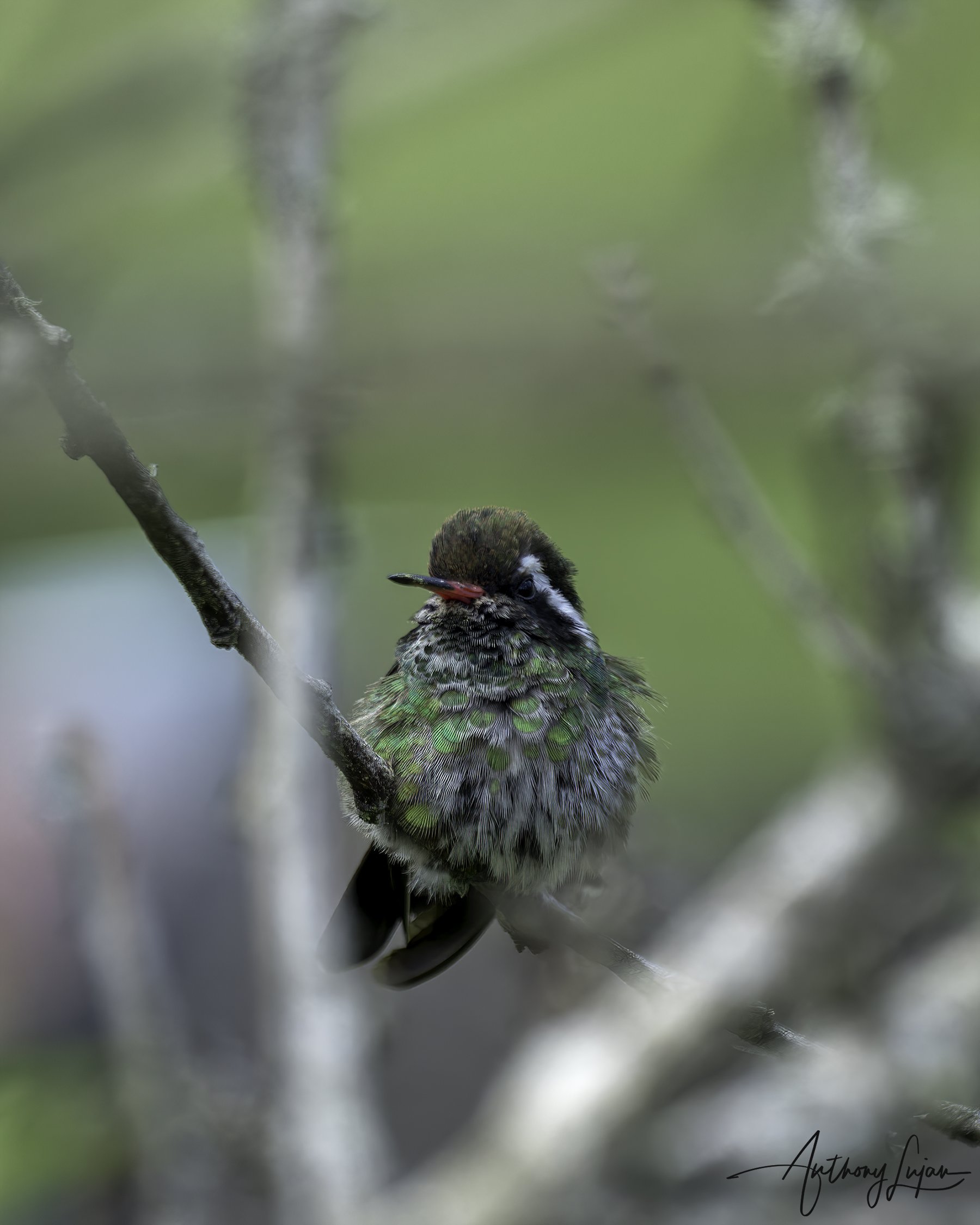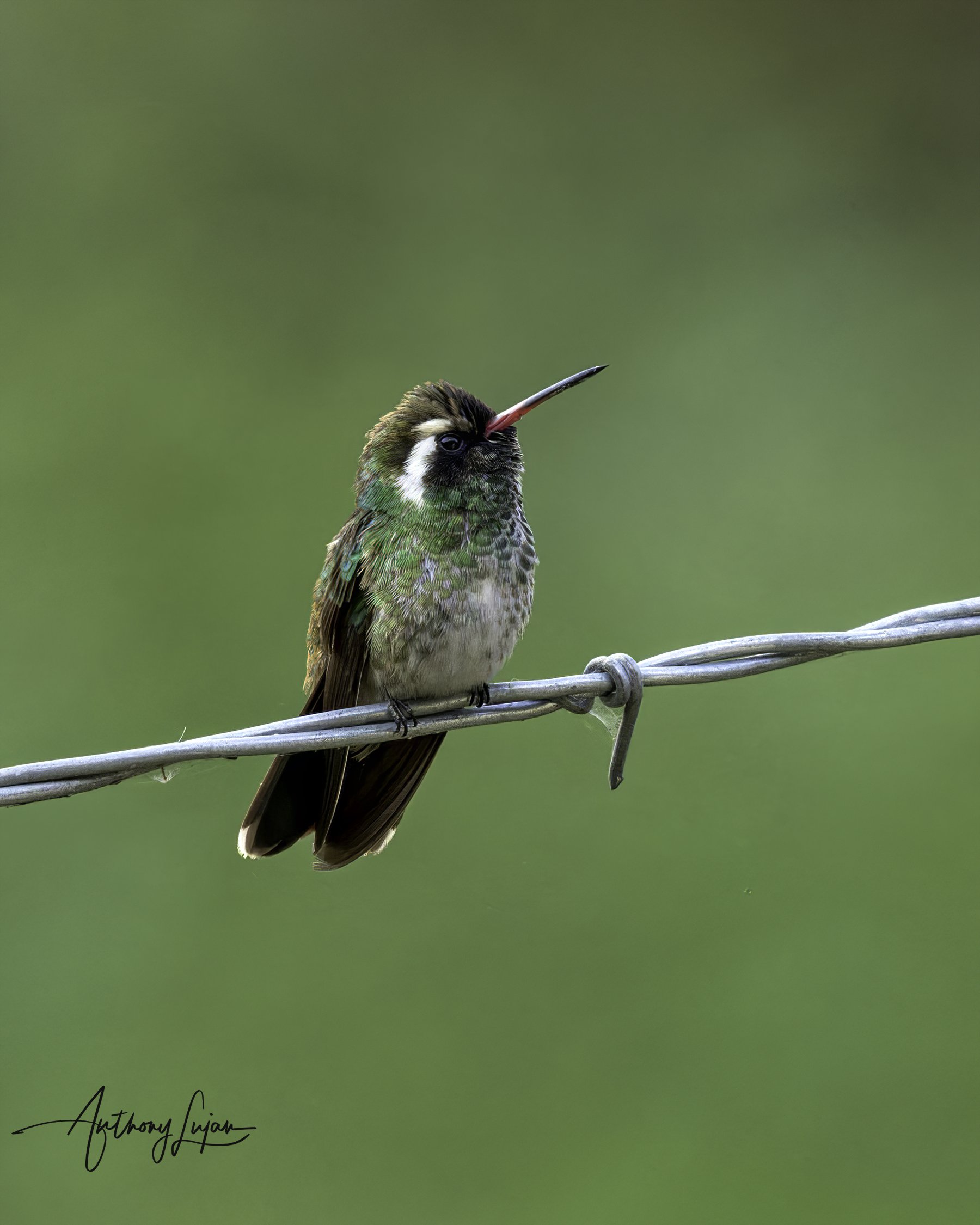White-eared Hummingbird
White-eared Hummingbird (Basilinna leucotis)
Name Origin:
Basilinna is derived from the Greek "basilinna," meaning "queen," possibly alluding to the regal appearance of the species. The species name leucotis comes from the Greek words leukos (white) and ous, otos (ear), referring to the distinct white postocular stripe.
Quick Facts
Length: 9–10 cm (3.5–3.9 in)
⚖️ Weight: ~3.5 g (0.12 oz)
🌎 Range: Highlands of Mexico to northern Nicaragua
🏣️ Elevation: 1,200–3,500 m (3,940–11,480 ft)
🌺 Diet: Nectar and small arthropods
🏡 Habitat: Pine-oak forests, montane woodlands, edges and clearings
🧬 Clade: Trochilini “Emeralds”
📊 Status: Least Concern (IUCN 2024)
Subspecies & Distribution
Three subspecies:
Basilinna leucotis borealis
Distribution: Northern Mexico (eastern Sonora, western Chihuahua, and southern Coahuila to southwestern Tamaulipas); rarely into southeastern Arizona, USA.Basilinna leucotis leucotis
Distribution: Central and southern Mexico (from Durango and San Luis Potosí southward) into Guatemala.Basilinna leucotis pygmaea
Distribution: Highlands of El Salvador, Honduras, and north-central Nicaragua.
Species Overview
The White-eared Hummingbird is a small, highland species known for its prominent white postocular stripe and relatively bold behavior. It thrives in mid- to high-elevation pine-oak and montane forests, often visiting feeders and garden flowers. Adapted to cool montane climates, this hummingbird is a common sight in many areas of Mexico and Central America.
Male Description:
Males display iridescent green upperparts and chest with a violet crown and shimmering throat patch (gorget). A bold white stripe runs behind the eye, contrasting with the darker head. The tail is dark and slightly notched.
Female Description:
Females are generally duller than males, with green upperparts and grayish underparts. The white postocular stripe is still prominent. The tail is similarly dark but with less iridescence and more pronounced pale tips.
Habitat & Behavior:
This species is typically found in pine-oak and cloud forests, often near edges, clearings, or gardens. It feeds actively at low to mid levels on nectar and supplements its diet with insects. Males are territorial around preferred feeding spots, and both sexes are fast, direct flyers with a sharp call.
Conservation Note:
The White-eared Hummingbird remains common throughout much of its range and adapts well to fragmented and human-modified landscapes. Continued preservation of montane forest habitat is important, especially in areas facing deforestation.
Below are individuals of the White-eared Hummingbird (Basilinna leucotis leucotis)
Photographed at:
Omiltemi, Chilpancingo de los Bravo, Guerrero, Mexico
Puerto del Gallo, General Heliodoro Castillo, Guerrero, Mexico
These birds belong to the subspecies leucotis, which ranges throughout the highlands of central and southern Mexico into Guatemala. It is characterized by its vibrant gorget and distinct white postocular stripe. The Guerrero region hosts suitable pine-oak and humid montane forest habitat where this subspecies is commonly found.


same subspecies as above but photographed in Guatemala.






